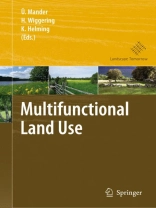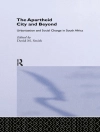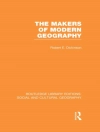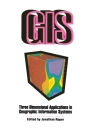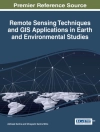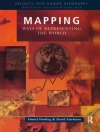Global change, land use policies and EU enlargement affect the driving forces for landscape functioning, land use management and rural development. New demands on landscapes and natural resources call for multifunctional approaches to land development. Tools are required to (i) identify the effects of land management on landscape sustainability and (ii) support the decision-making process on the multipurpose utilisation of landscape resources.
Scientists from across Europe installed the Landscape Tomorrow network to be prepared for new challenges of research on sustainable land development in a European perspective. In this publication they (i) analyse general principles of land use multifunctionality, (ii) highlight the specific requirements and approaches of implementing multifunctional land use from different disciplinary viewpoints, (iii) report on success stories of multifunctional land use from different geographic and political settings, and (iv) discuss modelling and monitoring approaches to scientifically assess the impact of mutlifunctional land use implementation. The book contributes to the scientific basis for future land development strategies and helps supporting land use decision making on the political, planning and management level.
Table of Content
Multifunctional land use: meeting future demands for landscape goods and services.- Multifunctional land use: meeting future demands for landscape goods and services.- Theoretical background and concepts.- Concept and valuation of landscape functions at different scales.- An ecosystem based framework to link landscape structures, functions and services.- Landscape goods and services related to forestry land use.- Application of ecological engineering principles in landscape management.- Multifunctional agriculture and multifunctional landscapes — land use as an interface.- Towards an institutional theory of multifunctionality.- The influence of agricultural landscape diversity on biological diversity.- Implementation of multifunctional land use.- Policies, research perspective and challenges on multifunctional land use.- Integration of multifunctional goals into land use — the planning perspective.- Agricultural management issues of implementing multifunctionality: commodity and non-commodity production in the approach of the MEA-Scope project.- Multifunctional farming, multifunctional landscapes and rural development.- Participative landscape planning using a GIS approach for facilitation.- Monitoring, modelling and assessing multifunctional land use.- Land suitability assessment methods for developing a European Land Information System for Agriculture and Environment (ELISA).- Land use modelling for sustaining multiple functions in the rural countryside with an application in the Achterhoek Region, the Netherlands.- Landscape issues of the EU Common Agricultural Policy reform: implications for modelling.- Indicators for agricultural policy impact assessment the case of multifunctional beef production.- Case studies for implementation of multifunctional land use.-Tourism and landscapes within multifunctional rural areas: the French case.- Planning for healthful landscape values.- The changing landscapes of transitional economies: the Estonian coastal zone.- Multifunctional land use: The Eisenwurzen region of the Austrian Alps.- Bukovské vrchy in the Slovak Carpathian Mountains — landscape changes and trends.- Innovations in land-use as response to rural change — a case report from Brandenburg, Germany.- The reclamation of the North Estonian oil shale mining area.
